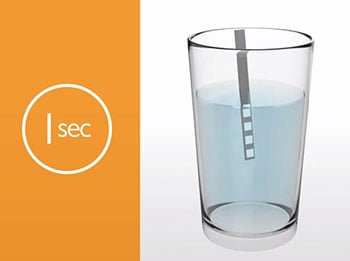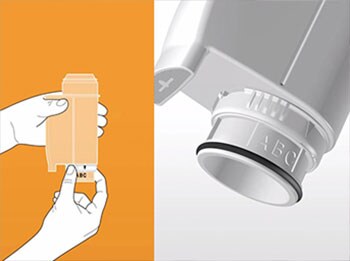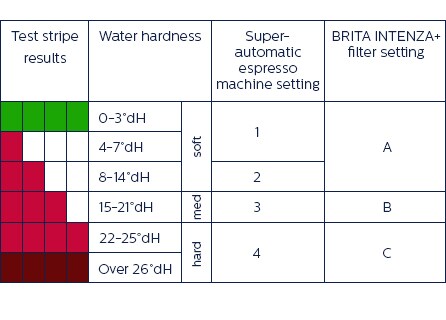How to descale
your coffee machine
Most frequently asked questions about descaling
What is "scale" or "limescale"?
Hard water contains high levels of calcium and magnesium salts, an essential part of the human diet. But when water is heated in your coffee maker, calcium and magnesium break down and precipitate to form solid limescale, or scale. This affects the boilers, pumps and any interior parts that carry water. Areas where the water sits still for a while, such as the boiler, are worst affected.
What effect does limescale have on a coffee machine?
In short, descaling your coffee machine helps you with the following:
• Prolongs the life of your coffee machine. • Ensures maximum cup volume.
• Ensures correct coffee temperature.
• Minimizes the noise created by the coffee machine during brewing.
• Avoids repair costs due to lime scale damage
• Ensures you have the perfect espresso crema.
• Ensures perfect tasting of your coffee.
The build-up of limescale over time will slow water flow, reduce boiler capacity, create heating problems and eventually cause blockages. This means the amount of coffee coming out of your coffee machine will slowly reduce and the coffee temperature might be lower than you’re used to. When more and more limescale builds up, water flow reduction will make the pump work harder, brewing coffee will become very noisy.
If you have experienced any of these symptoms with your coffee maker, you should urgently descale your machine. If you don’t, your machine won’t work at all anymore in the end and its repair won’t be covered by the warranty.
What effect does limescale have on your coffee crema?
Crema is the golden brown foam-like layer on your coffee’s surface. With a perfect espresso the crema should be thick, a light maple syrup color and taste sweet. Because the build-up of limescale will reduce water flow and pressure, the crema layer of a coffee machine that hasn’t been descaled might look more like a thin foam.
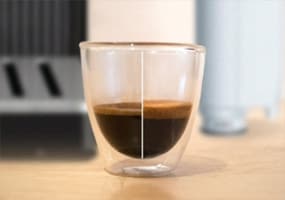
What does limescale do to your coffee taste?
Due to the limescale deposits, water is no longer directly in contact with the walls of the boiler, and is therefore no longer directly warmed up. The result is that your coffee has a lower temperature. In addition, limescale flakes can wash out of your coffee machine and lead to chalky particles in hot drinks. These flakes are highly concentrated minerals and can affect the coffee taste. Furthermore the usually white limescale flakes can appear in various colors, indicating that they’ve mixed with other minerals or metals. This will ruin your morning coffee ritual and shows how important descaling (also called deliming) your coffee machine is.
How is limescale removed?
Small domestic appliances such as irons, kettles or coffee makers will build-up limescale residues when heating tap water. Acidic solution can be used to dissolve the scale back into the water. Among the many available acids, Philips has identified the most effective solution for descaling, which will descale but not damage your coffee maker. To avoid damage to your machine, only use approved Philips or Saeco descaling solution.
What can I use to descale my coffee machine? Why not use vinegar for descaling?
Vinegar consists mainly of acetic acid and water. It is a common misconception that using vinegar is a good way to clean and descale coffee machines. However Philips explicitly recommends only to use Philips or Saeco descaler and never to use vinegar or vinegar-based products for descaling because of the following three reasons:
1. It doesn’t do the job! Vinegar contains acetic acid whereas Philips’ descaler solution is citric and milk acid. While vinegar might be able to slightly break down some deposits, it does not clean your coffee machine or remove oils as effectively as the recommended Philips descaler. 2. The vinegar leaves a strong odor which cannot be easily washed out of the machine. It can connect to the coffee oil in your machine, making your coffee undrinkable. The human tongue can detect ten thousand different aromas, but some will always be tasted more strongly, vinegar is one of them. 3. It runs through very slowly. Our tests show it can take to 3.5x longer to descale with vinegar compared to approved Philips or Saeco descaler.
Also other descaling agents should be avoided. Specifically never use descaling agents based on mineral acids such as sulfuric acid, hydrochloric acid and sulfamic acid. These descaling agents may damage your coffee machine’s pipe and tube system. An exception to this are pump-less drip filter coffee machines, as these have thicker pipes that allow white vinegar to be use. However due to the strong odor we recommend SENSEO® descaler for drip filter coffee machines too. Click on the products below to see more details.
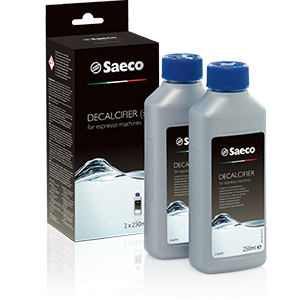
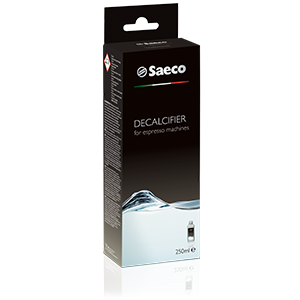
How often should I descale?
The intervals between descaling your coffee machine depend mainly upon 2 factors: For most of our modern coffee and espresso machines there will be an indicator to tell you when to descale. For the super-automatic espresso machines it will be necessary to input the water hardness into the machine, so it will prompt you adequately when to descale. If your machine does not have such an indicator, please refer to the table below for how often you should descale. As you can see, using a BRITA INTENZA+ water filter will give you twice as much time between each descaling action.
1. The level of calcium and magnesium salts dissolved in the water in your area (measured in "water hardness")
2. The amount of water running through your coffee or espresso machine.

Phone
0800 658 224
Monday to Friday 8:30 am - 8:00 pm
Saturday 9:00 am - 6:00 pm

